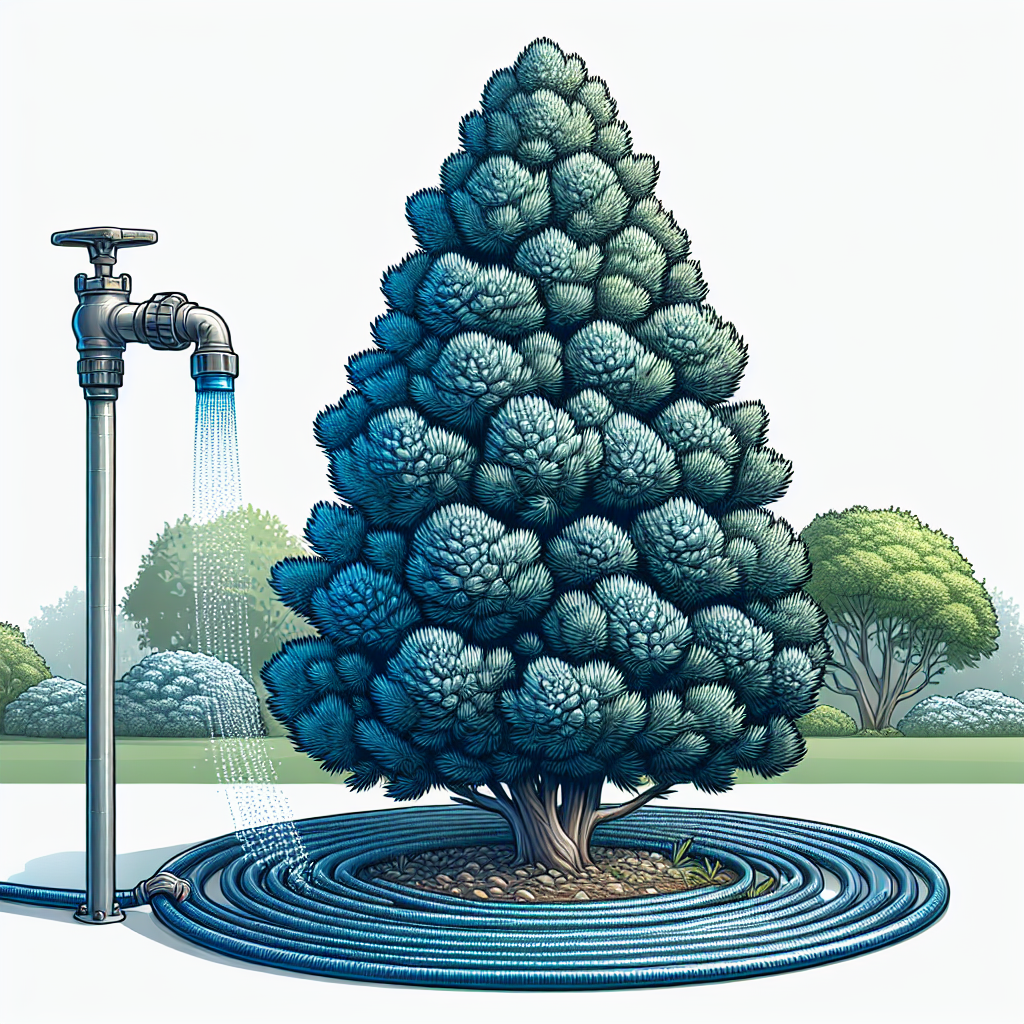Blue point junipers are beautiful and unique plants that need consistent hydration to thrive. Unfortunately, keeping them adequately watered can be a challenge, especially during hot and dry weather. One effective way to ensure your blue point juniper stays hydrated is by using a slow drip system. In this article, we will explore how to set up and maintain a slow drip system for your blue point juniper, so you can enjoy its beauty for years to come.
With the right knowledge and tools, setting up a slow drip system for your blue point juniper can be a straightforward process that yields great results. By providing a constant supply of water at a slow and steady pace, you can help prevent overwatering or underwatering, which are common issues that can lead to the decline of your plant’s health. Keep reading to learn more about how to keep your blue point juniper hydrated with a slow drip system.
**Choosing the Right Equipment**
When it comes to setting up a slow drip system for your blue point juniper, choosing the right equipment is essential. You will need a few key items to get started:
1. **Drip irrigation kit**: This kit typically includes tubing, emitters, connectors, and other necessary components for creating a customized watering system.
2. **Timer**: A timer will allow you to set specific watering schedules for your blue point juniper, ensuring it receives water consistently.
3. **Pressure regulator**: This device helps control the water pressure in your irrigation system, preventing damage to the tubing or emitters.
4. **Filter**: A filter helps remove debris and sediment from the water before it reaches your plant.
5. **Mulch**: Mulch helps retain moisture in the soil and reduce evaporation, promoting healthy root growth.
Before purchasing any equipment, make sure to consider the size of your blue point juniper and its watering needs. It’s also important to choose high-quality materials that are durable and long-lasting.
**Installing the Slow Drip System**
Now that you have all the necessary equipment, it’s time to install the slow drip system for your blue point juniper:
1. **Plan your layout**: Before installing any components, plan out where you want the tubing and emitters to go around your plant. Consider factors such as sunlight exposure and soil moisture levels.
2. **Cut tubing to size**: Use scissors or pruning shears to cut the tubing into appropriate lengths based on your layout plan.
3. **Connect tubing**: Attach connectors as needed to connect different lengths of tubing together.
4. **Insert emitters**: Place emitters along the tubing at intervals around your blue point juniper, ensuring they are positioned near the roots for efficient watering.
5. **Attach timer and pressure regulator**: Connect the timer and pressure regulator between the water source and tubing using appropriate fittings.
6. **Test system**: Turn on the water supply briefly to check for leaks or malfunctions before setting up a regular watering schedule.
**Maintaining Your Slow Drip System**
Once you have installed your slow drip system for your blue point juniper, it’s important to maintain it properly to ensure optimal hydration:
1. **Monitor moisture levels**: Regularly check the soil around your plant to make sure it is not too wet or too dry. Adjust watering schedules as needed based on weather conditions.
2. **Inspect components**: Check tubing, emitters, filters, and other parts of your irrigation system regularly for clogs or damage. Clean or replace any worn-out parts as necessary.
3. **Adjust settings**: Fine-tune settings on your timer and pressure regulator as needed throughout the growing season to accommodate changes in temperature and humidity.
4 .**Replenish mulch**: Periodically add fresh mulch around your blue point juniper to help retain moisture in the soil.
By following these maintenance tips regularly, you can help ensure that your blue point juniper stays healthy and hydrated with minimal effort.
**FAQ**
Q: How often should I water my blue point juniper with a slow drip system?
A: The frequency of watering will depend on factors such as weather conditions and soil type but aim for deep watering once or twice per week during dry periods.
Q: Can I use rainwater in my slow drip system?
A: Yes! Rainwater is an excellent choice for watering plants as it is free from chemicals found in tap water.
Q: Should I shut off my slow drip system during heavy rainfall?
A: It’s generally recommended to turn off irrigation systems during heavy rainfall events as natural precipitation may provide enough water for plants.
Q: Can I install a slow drip system for multiple plants in my garden?
A: Yes! You can expand your irrigation system by adding more tubing and emitters around different plants in your garden using connectors.
In conclusion, keeping a blue point juniper hydrated with a slow drip system is an effective way of ensuring its health and longevity without much hassle on our part if we follow these simple steps carefully every time one waters them!













